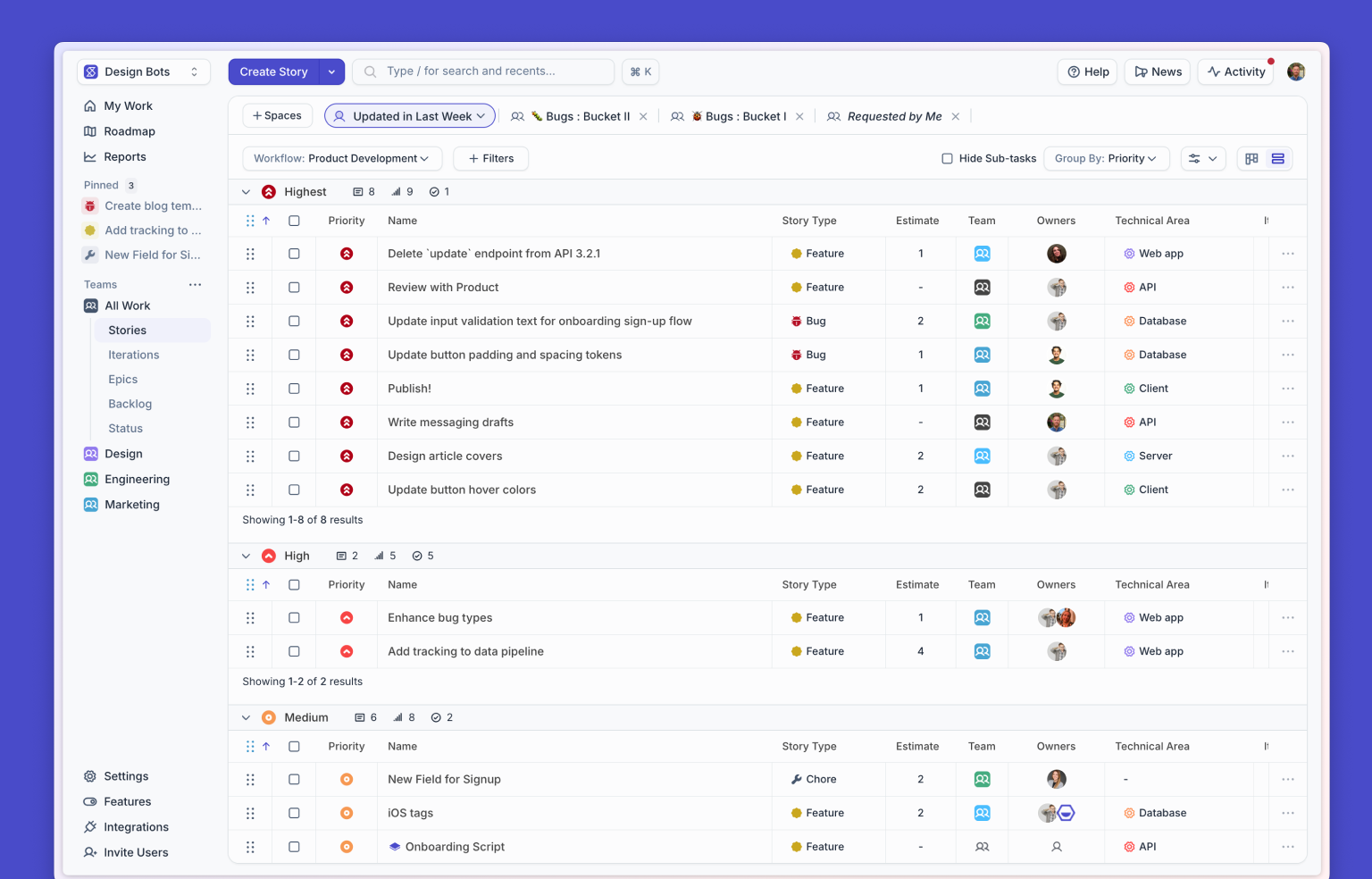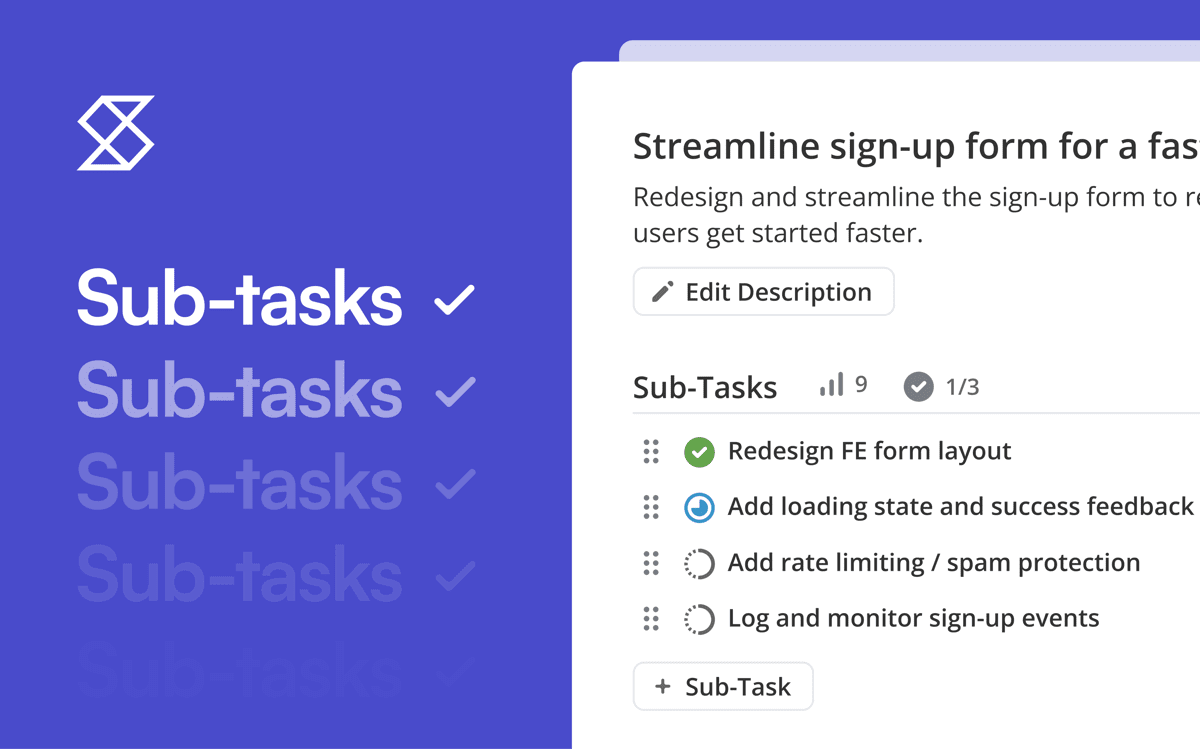Feeling Jiritation?
It’s not you. It’s Jira.
Let’s face it, if you’re a software engineer, you hate using Jira. So put an end to all the frustration and unhappiness this tool is causing you. Seriously. There are many Jira alternatives out there that bring software engineers and product managers together that don’t make you sigh every time you look at them or grow to resent the work that you do. And they are not Trello, monday.com, Clickup, Asana, basecamp, pivotal tracker, or Linear.
So if you’re using Jira and have a case of the Jiritations, read on for 9 tell-tale signs that it’s time to break it off.
1. Jira tries to micromanage you.
Jira enables micromanagement to the extreme. Overly bureaucratic, management at many organizations use the tool as a time-tracking and get just plain tracking tool - a way to log and control every minute of an employee’s time. This is the opposite of Agile methodology. Engineers are made to feel like they’re working on an assembly line, with needless workflows that are made to please executives, not engineers - the ones who are actually doing the work.
Read More: How to Bring Engineers On Board with the Product Vision
2. Jira isn’t getting any younger.
Jira is the industry standard, which simply means that it was the first - which is not a bad thing in and of itself, necessarily, except that it hasn’t really evolved over time. It’s manual and static. It’s outdated. You can tell this from its clunky, slow, cluttered, unresponsive, and un-intuitive user interface, which lacks detail and consistency.
3. Jira doesn’t care about your opinions.
Jira wants things done a certain way. Jira’s way. It’s virtually impossible to make changes or customize on the fly. The tool encourages process over progress, when it’s not a project management tool that everyone in the company (i.e. marketing, design) can even use.
4. Jira overcomplicates everything. Everything.
There are meaningless attributes and an overload of features to make even the simplest tasks complicated. Jira encourages synchronous communication, not asynchronous, which is not the reality of the way software teams work. For agile teams, an issue tracking tool should help, not hinder, progress.
5. Jira ignores you when you ask for help.
Another complaint engineers have about Jira is that it’s not useful in standups, meetings, and other interactions. This means people are forced to talk outside the tool, like in GitHub and Slack. Atlassian (maker of Jira) provides a lot of how-to content, but who wants to read all that when you need a simple answer to a simple question? It’s very hard to get help quickly when you need it - so you go elsewhere.
6. Jira takes forever to get ready.
Jira is slow. It takes forever for pages to load. You’re waiting around a lot. And even then, something that should take you only two seconds to do takes infinitely longer.
7. Jira has too much stuff.
Jira has waaaaaayyy too many features, simply for the sake of having features. In software development, many decisions are being made all the time, and things change, and Jira is not set up for this reality. Engineers like simplicity and efficiency. Jira is the total opposite of this.
8. Jira doesn’t like meeting new people.
It’s very hard to learn Jira. Not because it’s smart and powerful, but because it’s kinda dumb and overly convoluted. The steep learning curve makes onboarding particularly frustrating for new employees. We’re talking hours of tutorials. It’s pretty impossible to just jump in and start using the tool.
9. Jira doesn’t get along with your friends.
Engineers. Do. No. Like. Jira. Really, they are pretty united when it comes to how much they hate this product. Shouldn’t that be a sign?
Read More: How to Make Engineers and PMs Like Each Other
Switch to the Best Jira Alternative: Shortcut
Here’s the thing, you don’t have to use Jira. Nobody has to! So why make your software teams do this thing that they hate? Why not switch to something that’s not so rigid and opinionated and formal – something that enables cross-team collaboration for even non-technical team members, like product and design teams, in addition to engineering; something that is lightweight, but still has powerful functionality; something… wait a second, it sounds like I’m describing Shortcut - the ultimate agile project management tool. In fact, I am!
Read More: Product Development the Shortcut Way
Flexibility without complexity
When an entire organization can use a single project management tool, it becomes easier for teams to collaborate and be more efficient. Shortcut is flexible enough to support a scaling organization, yet easy enough for all departments to master. Everybody at Shortcut uses Shortcut because it’s opinionated enough to stay organized, but flexible enough to support a scaling organization.
Intuitive enough for anyone to use
If you’ve used Jira, you know it’s not easy to get non-technical users to master or appreciate. That’s why pretty much only software engineers use Jira. But we’ve built Shortcut in such a way that it remains intuitive enough for anyone to use. From marketing and design teams to product and software development, Shortcut can be adapted to organize any team’s workflow.
Heavily team-oriented
Shortcut is a collaboration project management tool built for entire teams. Shortcut is a place for cross-functional teams to come together, collaborate, manage roadmaps, track and document work, and measure success all within the same system record. A single source of truth.
Integrations
Shortcut offers keyboard shortcuts, deep integration with GitHub, Markdown support, and a well-crafted API. Together, these integrations help Shortcut evolve and improve your software development workflow. Shortcut is fast.
Zoom in, zoom out for transparency
Shortcut allows you to zoom in to pinpoint updates on the delivery of a single project or quickly zoom out to see planning across several teams or the whole organization, all from one agile dashboard. Transparency and inclusivity are huge parts of what makes Shortcut the product work, and also two big values we share as a company.
Read More: How Shortcut Supports Agile Development: Scrum, Kanban, and Everything in Between
Speed
Simply put, Shortcut is fast. Speed is our weapon. You’re not waiting around for your work to load. As mentioned above, one of the main frustrations users have with Jira is its slowness. It’s slow because it’s trying to do too much.
Shortcut vs Jira
- Story vs Issue
The Shortcut Story simplifies the Jira system with less configuration and less confusion.
- Epic vs Epic Issue Type/Project
An Epic in Shortcut streamlines the hierarchy and gives one clear and effective way to view, zoom in and out of, and organize your work into features or larger pieces of work.
- Milestone vs Initiative/Project
The Shortcut hierarchy provides visibility at all levels with clear links between Stories, Epics, and Milestones.
- Iteration vs Sprint
Iterations are easy to set up, with reporting to track progress, and brings all your work and documentation together with Docs.
- Teams vs (Teams / Projects)
Teams bring your engineering and product squads together so everyone can easily view and complete the work they are responsible for.
- Saved Spaces vs Board
Use Saved Spaces on the Stories page to create filtered views that show your work, your team’s work, and any other customized board view you need. The Stories page can quickly toggle Workflows and filter on various dimensions, so there is no need to create siloed "Boards" as in Jira.
- Workflow vs Workflow / Column
The Shortcut Workflows gives the customization you need without Jira’s needlessly complex configuration.
Read More: Shortcut vs Jira: Choose the Most Powerful Project Management Tool
Try Shortcut for Free
It’s actually not that painful, hard, or overwhelming to break up with your project management tool. Breaking up with your project management tools is easy. In fact, it’s a lot easier done than said. We even have a handy import tool, so you don’t lose any of your ongoing work.
Your project management software shouldn't be a four letter word. Shortcut combines speed and flexibility to let your team plan, build, and launch better software - and it doesn’t make you wish computers didn’t exist. Try it for free!

















%20(788%20x%20492%20px)%20(1).png)
.png)

